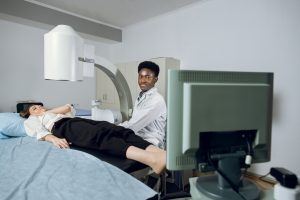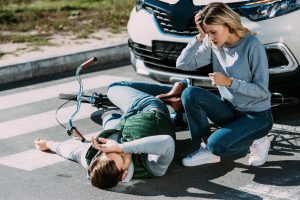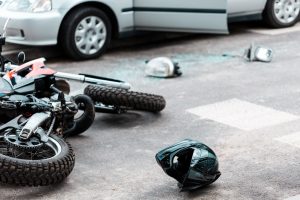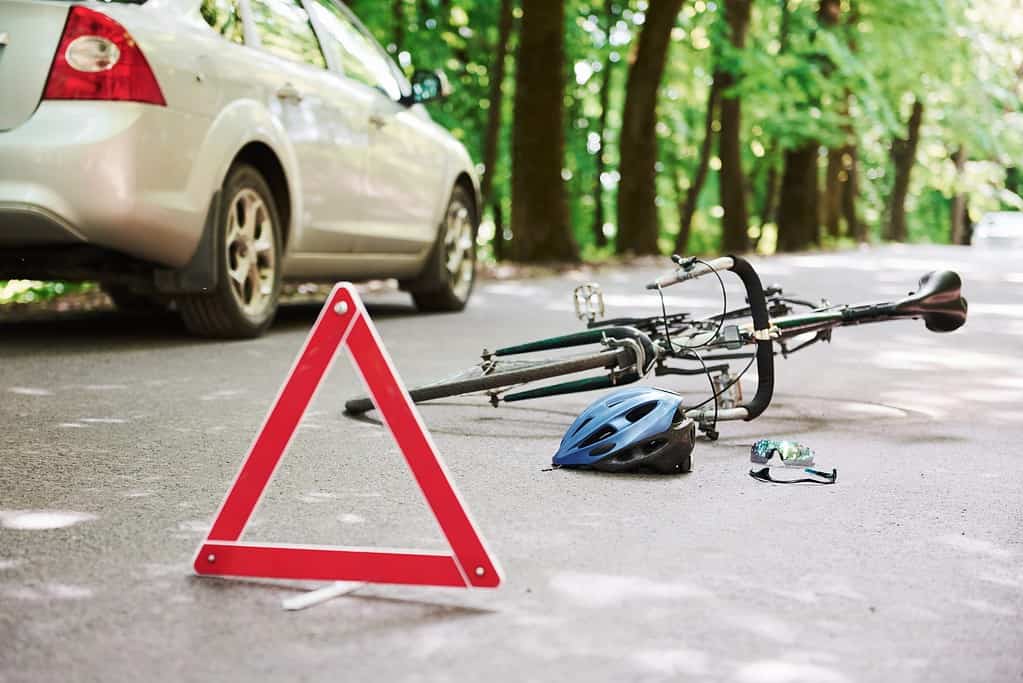Being a daily commuter, you must already be accustomed to sharing the road with motorcyclists. Chances are you’ve seen a rider veering between the lanes when there is heavy traffic- a practice known as lane splitting.
This habit is why motorists and motorcyclists don’t see eye to eye. It can significantly increase the chances of an accident if the motorcyclist is speeding.
Funny enough, even if lane splitting is a prime cause of a collision, it is the biker who sustains more injuries. Perhaps this is why there is a dispute on who is at fault if a motorcycle hits a car. Regardless of whether the motorist is in the right, a biker always has the upper hand.
This begs the question of whether you can successfully pursue a motorcycle accident claim if a motorcycle hits a car. Read on to find out what happens if a motorcycle hits a car.
What Happens When a Motorcycle Collides with a Car?
When a motorcycle collides with a car, what happens is that you may suffer injuries. You heard that right; a motorcycle accident can injure a person in a car.
Apart from injuries, you might suffer property damage. Your car will be damaged at the point of impact, thus costing you a lot of money in repairs.
But there are more important things to do before thinking of car repairs. You need to:
1. Seek Medical Treatment
Any accident, including a motorcycle accident, can lead to significant injuries. Your safety and that of those around you should be the priority.

The best way to protect your health is to seek medical attention as soon as possible. You can go to your primary care physician or the emergency room if you are bleeding or in pain.
2. Contact Law Enforcement
After attending to your injuries, the next step is to report to the authorities. The local police unit will dispatch officers to write a report of the motorcycle accident.
The police report contains the following information:
- Time and date of the motorcycle accident
- Location
- Weather and road conditions
- An account of the vehicular damage
- Statements from involved parties
The police report is essential in your attempt to receive monetary compensation after a motorcycle accident.
3. Establish Liability
The fact that a motorcycle hit your car doesn’t necessarily mean they are entirely liable for the accident.
True, the accident might have resulted from the motorcyclist’s negligence. But it’s also possible that another motorist or you (the driver of the struck car) is partially negligent.

Besides, the local government’s failure to maintain the road as expected or place appropriate traffic signs could have contributed to the accident.
So, there is a chance that liability will extend to multiple parties. You have to look at all these possibilities when pursuing the case.
Who Is At-Fault in a Collision Between a Motorcycle and a Car?
If a motorcycle hits a car, who’s at fault?
Well, liability is not obvious, even when a motorbike hits a car. So many factors will determine liability in crashes between motorcycles and cars.
The circumstances that led to the collision, alongside evidence that specifies the real cause of the crash, will determine the percentage of fault for the two parties.
Insurance adjusters assume the role of determining fault in a motorcycle accident. They look at the damages on your car, take statements from both parties, and seek witness statements.
After assessing the damage and determining the fault, the insurance adjuster will negotiate a settlement with you.
How Do You Prove That a Motorcycle is At Fault?
If a motorcyclist hits your car, you must prove negligence to have a successful claim for damages. Negligence, in accident terms, is defined as careless or reckless behavior on the road that causes harm to others.
There are four elements you must meet to prove negligence:
- Duty: The defendant in a motorcycle accident (biker) owes the plaintiff (car driver) a legal duty of care to ensure the safety of other road users.
- Breach: The plaintiff must show that the defendant violated the duty.
- Causation: A plaintiff has to show that the defendant’s breach of duty caused the accident that resulted in injuries.
- Damages: You must show proof of damages and injuries from the defendant’s negligence.
Remember, don’t try to prove that the motorcyclist is negligent through self-representation, also known as pro-se representation.
It takes an experienced accident lawyer to prove the motorcyclist’s negligence or negligence of another party (such as government failure to put a stop sign).
What Does Insurance Say About Accidents Between Motorcycles and Cars?
When a motorcycle collides with your car, you pursue a claim for damages from your insurance company or the biker’s insurance. However, this is not a smooth process- the insurance company has to determine the fault before compensating you.
The first thing that insurance companies do is to look at the point of impact on the car.
Generally, if the point of impact is on the front of the car, the insurance company will say that the car driver is at fault for the accident. But the motorcyclist becomes at fault if the car’s rear was the point of impact, such as the back bumper.
What if a car hits a motorcycle and a motorcyclist hits you in the back bumper? Who is at fault? Then both of you will be partially liable for the accident.

The other thing that insurance companies look at is the location of the accident.
Motorcycle accidents are prevalent at intersections. In commercial law, motorists should yield to the stop sign and look both ways before moving forward.
If a motorcycle fails to do this, it can hit a car on the side, between the front fender and the front door. Since it is not the front of the car, insurance companies will hold the rider 15% to 50% at fault for the accident.
The insurance may even place more fault on the motorcycle when the impact is further back on the car.
What Injuries Can Result from Car and Motorcycle Accidents?
While accidents between motorcycles and cars mainly injure and kill motorcyclists, car drivers may also suffer injuries. Here are some of the injuries that a car driver and motorcyclist can sustain after an accident:
1. Soft Tissue Injuries
These are injuries to the connective tissue in the body, such as muscles, ligaments, and tendons. Whiplash is one of the soft tissue injuries that you can sustain if a collision forcefully throws your head back and forth.
The same force can also cause soft tissue injury on your back, resulting in low-back muscle strains.
2. Head Injuries
Head injuries can range from minor scratches to severe damage. A car driver may sustain head injuries if their head forcefully hits the steering wheel or side window.

On the other hand, a biker will sustain head injuries if they fall off the motorbike and hit their head on the road surface. These injuries can cause traumatic brain injury and other fatal consequences.
3. Sprains and Strains
An accident will have your knees hitting the dashboard if you are driving or the seat if you are in a commuter bus. Similarly, the biker’s legs or arms can come into contact with the car’s body during an accident.
Whether in a car or motorbike, your arms and legs may suffer bruises, sprains, or even break.
4. Fractures and Broken Bones
Any of your bones could break during an accident based on the nature of the crash. Arm and leg injuries are typical for bikers and car occupants alike.
The good thing is that fractures need only a cast to heal. But if you suffer compound fractures, you may have to undergo surgery.
5. Spinal Cord Injuries
These are more likely to affect the biker than the car occupants. Unfortunately, if the impact of a collision causes spinal cord injury, it can result in paralysis.

This injury is catastrophic because it causes permanent disability for the victim.
6. Internal Injuries
Both car and motorcycle accidents can result in internal injuries. Any blunt-force trauma or penetrating trauma experienced by the car driver or the biker can cause damage to internal organs, leading to internal bleeding.
You must go to the hospital immediately if you suffer any of the above injuries after an accident between a car and a motorcycle. Failure to seek medical attention could result in further complications.
Contact Legal Giant Today for Legal Help!
Dealing with motorcycle accidents can be a challenging experience, even if it does not result in severe injuries or property damage.
You will have to undergo the claims process with your insurance company or the motorcyclist to get your rightful compensation.
Working with an experienced accident attorney can help alleviate all this stress. At Legal Giant, we can guide and help you through the whole process. Contact us today for a free, no-obligation consultation and review of your case.

